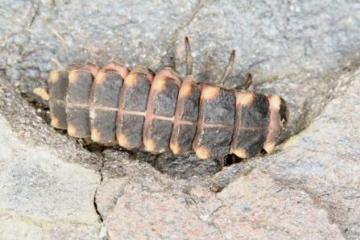Glow-worm survey
Glow-worm Lampyris noctiluca in Essex
Information extracted from text written for Essex Field Club in 2000 by Tim Gardiner and Robin Field, Writtle College, Lordship Road, Writtle, Chelmsford, CM1 3RR
The Glow-worm Lampyris noctiluca is a beetle which belongs to the family Lampyridae. L. noctiluca females emit a green glow at night with which they attempt to attract flying males. It is the females light that make this species easily detected for a few weeks, primarily in June and July although some may be spotted as early as May and as late as October. The distribution of L. noctiluca in Britain could be described as widespread but local and some authors state that there may have been a steady decline in the British population since the 1950s. However, there is little statistical evidence of such a decline, as this nocturnal species is only easy to record for a few weeks of the year.Possible reasons for any decline may be habitat destruction, habitat fragmentation, pollution, distraction of males by artificial lights and inappropriate management (i.e. lack of grazing). L. noctiluca is especially threatened by the factors mentioned above as the female cannot fly and thus disperse to new sites. In Essex L. noctiluca has been described as rather rare, although national enthusiast Robin Scagell describes the county as under-researched. The authors have gathered much historical information on L. noctiluca sites and contacted many wardens of various nature reserves, and from this information this species seems fairly widespread but extremely local. Only 10-kilometre records are presented, as many pre-1990 records are rather vague and do not have full six figure grid references.
There are no recent records from areas where L. noctiluca was once common. An example of such an area is Epping Forest with W. Cole stating that he had not seen L. noctiluca in the Forest for many years until he recorded a solitary female in 1899. The authors believe that further research in such areas would be worthwhile.
Habitats utilised by L. noctiluca in Essex appear to be unimproved grassland which has never been sprayed with chemicals, and females have been recorded from roadside verges, woodland rides, heathy grassland and disused railway lines. Many sites also seem to have no artificial lighting nearby as this may distract males looking for glowing females. Wardens of most sites that are situated on nature reserves conduct yearly counts of numbers along a set route. One such count at Langdon Hills in 2000 recorded 100 glowing females in one evening which the author believes is a notable number as only 10 to 20 sites nationally have that many recorded on one night.



















